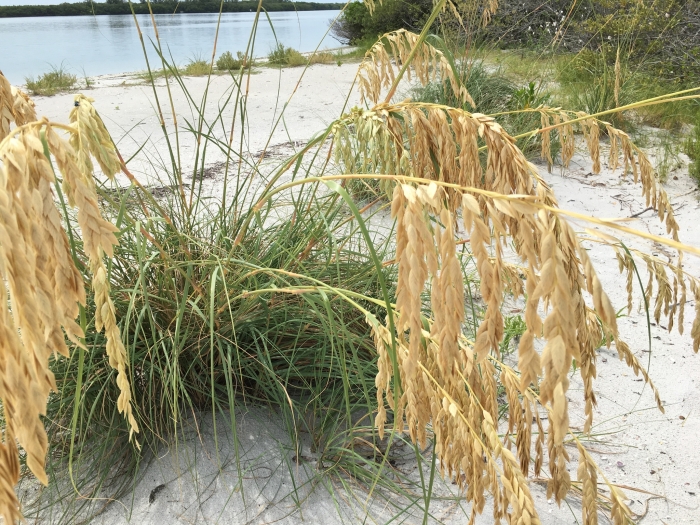Sea Oats
(Uniola paniculata)
Sea Oats (Uniola paniculata)
/
/

© Darren Oh
CC BY-SA 4.0
Image By:
© Darren Oh
Recorded By:
Copyright:
CC BY-SA 4.0
Copyright Notice:
Photo by: © Darren Oh | License Type: CC BY-SA 4.0 | License URL: http://creativecommons.org/licenses/by-sa/4.0/ | Uploader: darrenoh | Publisher: iNaturalist |



















Estimated Native Range
Summary
Uniola paniculata, commonly known as Sea Oats, is a perennial grass native to coastal dune systems and beachfronts in the southeastern United States, eastern Mexico, and some Caribbean islands. It is an essential component of coastal sand dune and beach plant communities, playing a crucial role in stabilizing these dynamic environments. Sea Oats typically grow up to 7 feet tall, with large, showy seed heads that turn golden brown in late summer, providing visual interest and food for wildlife. This species thrives in sandy soils with high salinity and can withstand the harsh conditions of coastal winds and salt spray.
Sea Oats are valued for their ability to stabilize sand dunes with their deep roots and extensive rhizomes, which help protect beaches from erosion. They are often used in coastal restoration and sand stabilization projects to mitigate storm damage and are protected by law in several states due to their ecological importance. In cultivation, Sea Oats require full sun and well-drained, sandy soils, and they are tolerant of drought and salt spray, making them low-maintenance once established. However, they should not be planted outside their native range to prevent potential invasiveness.CC BY-SA 4.0
Sea Oats are valued for their ability to stabilize sand dunes with their deep roots and extensive rhizomes, which help protect beaches from erosion. They are often used in coastal restoration and sand stabilization projects to mitigate storm damage and are protected by law in several states due to their ecological importance. In cultivation, Sea Oats require full sun and well-drained, sandy soils, and they are tolerant of drought and salt spray, making them low-maintenance once established. However, they should not be planted outside their native range to prevent potential invasiveness.CC BY-SA 4.0
Plant Description
- Plant Type: Grass
- Height: 4-6 feet
- Width: 1-2 feet
- Growth Rate: Slow
- Flower Color: N/A
- Flowering Season: Summer
- Leaf Retention: Evergreen
Growth Requirements
- Sun: Full Sun, Part Shade
- Water: Low
- Drainage: Fast, Medium
Common Uses
Border Plant, Drought Tolerant, Erosion Control, Low Maintenance, Water Garden
Natural Habitat
Coastal dune systems and beachfronts
Other Names
Common Names: Sea Oats , Seaside Oats , Beach Grass , Gulf Uniola
Scientific Names: Uniola paniculata , Briza caroliniana , Nevroctola maritima , Nevroctola maritima , Nevroctola paniculata , Nevroctola paniculata , Trisiola paniculata , Uniola floridana , Uniola heterochroa , Uniola macrostachys , Uniola maritima
GBIF Accepted Name: